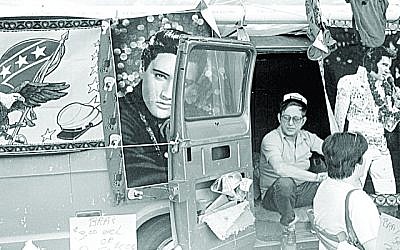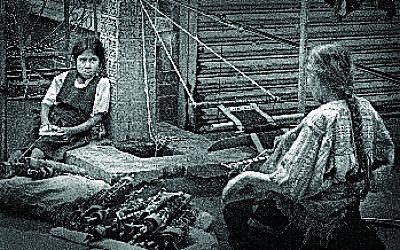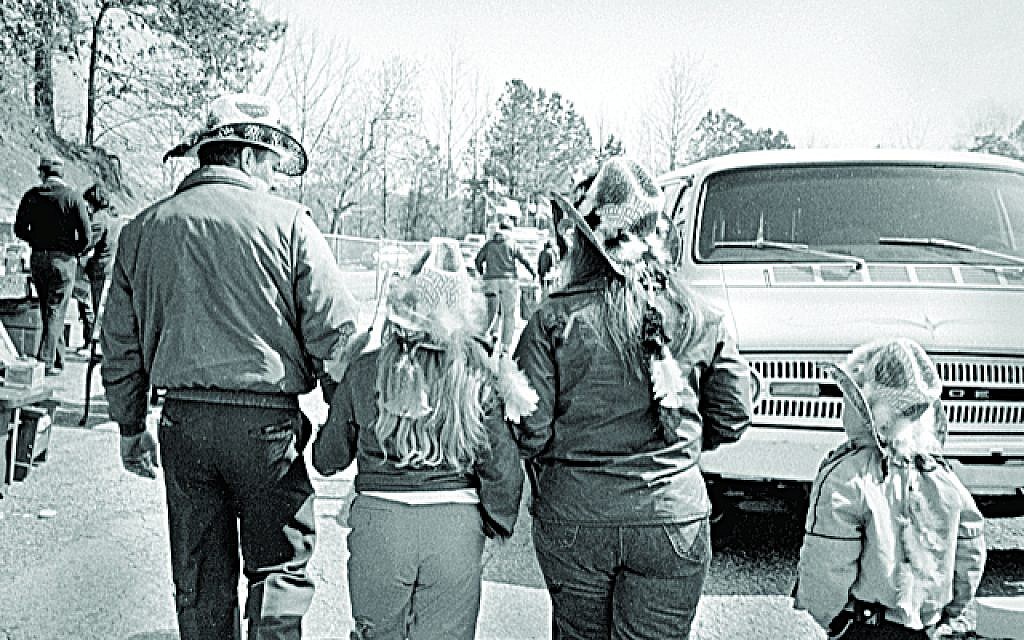My Life in Photographs
The photographs of Holocaust survivor and sociologist Eugen Schoenfeld display joy, empathy, and understanding.
In each of our lives there are defining moments. The images we remember of those defining moments may stay with us for a lifetime. And yet, says Eugen Schoenfeld, there are just moments in each person’s life that are a simple display of their humanity and of the human condition. This remarkable man has survived through many defining moments and yet prefers to create photographs that display joy, empathy and understanding.
“It’s not what you look at that matters, it’s what you see” is a famous quote by Henry David Thoreau. The photographs in this exhibition express every day human experiences, but to really see the value of these spontaneous moments, we must look through the prism which Schoenfeld looks through, to see the world.
Schoenfeld was born in 1925 in Munkacs, a small shtetl in the foothills of the Carpathian Mountains. He was 18 years old when, along with the Jews of his home town, Schoenfeld was shipped to the slaughterhouses in Auschwitz. From Auschwitz, he and his father were taken to a camp in Warsaw, Poland, before being moved to Dachau. In April of 1945, the camp was liberated.
Get The AJT Newsletter by email and never miss our top stories Free Sign Up
In 1946, Schoenfeld bought his first camera while working for the United Nations as a welfare officer until being granted a visa to come to the United States in the summer of 1948. He earned a master’s in sociology from Washington University, and later, a Ph.D. from Southern Illinois University.
The now retired professor and chair emeritus of the sociology department at Georgia State University moved to Atlanta in 1970 and enjoyed being a vibrant part of both the university and the photography community.

My relationship with professor Schoenfeld began when I was a student in his sociology class at Georgia State University. Later, I was a member of Atlanta Photography Group with this man who had been fascinated with photography since childhood and always dreamed of owning a camera. Schoenfeld’s vision through the lens of his camera reflects his humanist view of society.
“I have seen too many tragedies and wished to stay away from human problems and human desperation. I sought to depict a positive view of the human world. I was seeking the moments when people, unknowingly and unconsciously, displayed themselves as human beings.”
A powerful and unforgettable defining moment in Schoenfeld’s life was May 2, 1945, the day he was liberated from a German concentration camp. That was when he realized he had survived the Holocaust but then would have to survive the ordeal of liberation with the awareness that he had lost his family, his home, his country and his way of life. How, he wondered, could he deal with his anxiety, his fear and his shock? The pressing question in that moment was, “What do I do now?”
Schoenfeld’s love for photography has grown from his first encounter with sun sensitive photo papers and then with 4-by-5 glass plate negatives. The images and the processes were magical, but they were not fixed and soon disappeared. He yearned for a camera and bought his first, a Leica IIIc, which was soon stolen from him. But his next camera, a Kodak Retina, traveled with him as he migrated to the United States in 1948.
Working at Memphis State University in 1967 with a used Exakta SLR camera, Schoenfeld learned darkroom techniques and dedicated himself to street photography. As photography mentors entered his life, Schoenfeld became connected to and learned from such well-known photographers as André Kertész, Arnold Newman and Atlanta’s own John McWilliams.
Through his many years as a sociologist and a photographer, this outstanding professor and artist has chosen to bring to the viewer a moment of joy and a feeling of empathy through his photographs. I will always appreciate the honor of having been his student and seeing the world through his eyes.
Kim Goodfriend, assistant director, Arts + Culture of the Marcus JCC, has organized the photographs in an exhibition in the Katz Family Main Street Gallery. These black and white images use chiaroscuro to create contrast in a collection of images of people and places in moments of time. Exploring the contrasts with literal light and dark, combined with the philosophy and technique of ‘decisive moment’ add dimension to the photographs in the exhibition. Goodfriend’s professional and personal experience with Holocaust survivors inform her conversation with the images.
Visual and audio recordings of many eye-witness accounts, including those of Cantor Isaac and Betty Goodfriend, z”l, as well as Schoenfeld, exist as vital evidence of the Holocaust. However, childhood memories of family, school and faith before the war, combined with the story of how a life is rebuilt, add valuable story pieces when trying to get to know a Holocaust survivor. The unexpected part of the narrative is often found in those moments between love and loss, prison camp and freedom, light and dark.

Schoenfeld, a dedicated amateur photographer and trailblazer in the science of human social relations, now uses the Katz Family Main Street Gallery as his lecture hall. He challenges the viewer as he challenged his students.
Discover the unexpected human dimensions of every person’s life experience.
Susanne Katz is director of exhibitions for the Breman Jewish Heritage Museum.
Retrospective: Photographs by Eugen Schoenfeld, is on view at the Katz Family Mainstreet Gallery at the Marcus JCC of Atlanta, through September 17.




comments